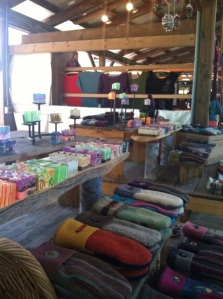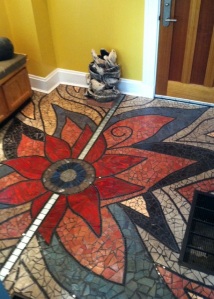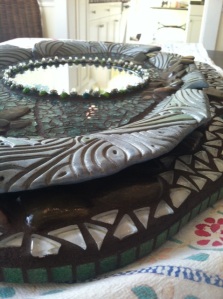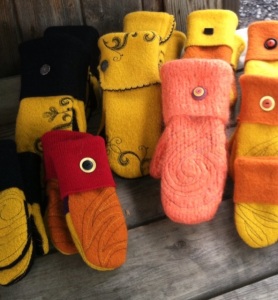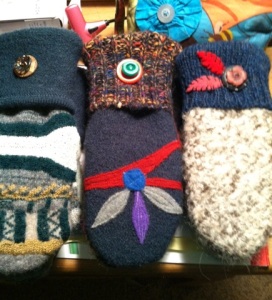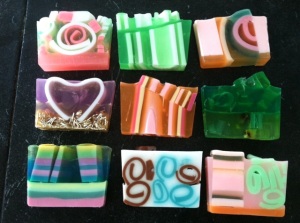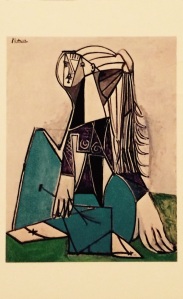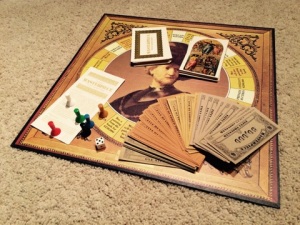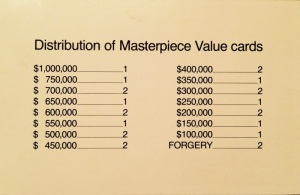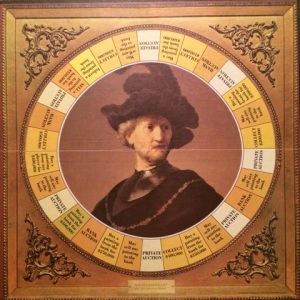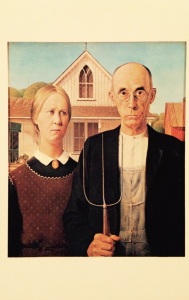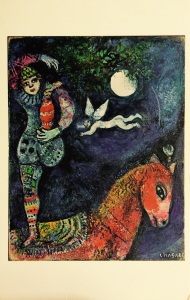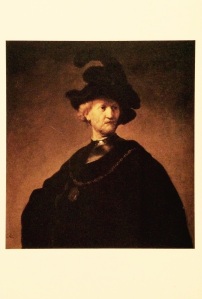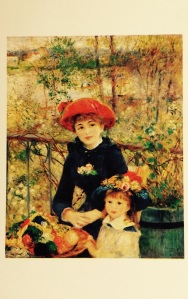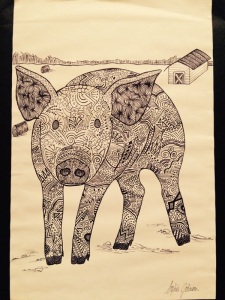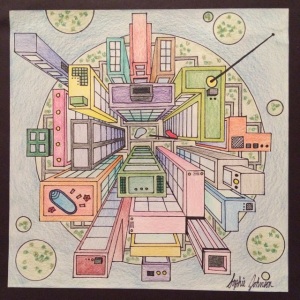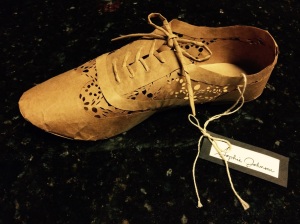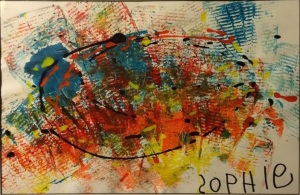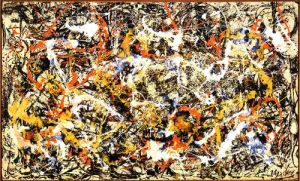A broken ceramic plate. A pile of sweaters that didn’t make the cut when you last cleaned out your closet. Miscellaneous stones and pebbles. A bar of plain, unused soap. A few random buttons that seem too strange to ever be especially useful.
Looking at a pile of these miscellaneous items, few people would find this collection very special. The shattered plate would be swept up and thrown away, and the sweaters relocated to a bag labeled “donate”. The rocks must go outside where they belong while the bar of soap takes its rightful place next to the sink. Finally, those random buttons are dropped carelessly into that one drawer in the house that has no specific purpose other than to hold all sorts of useless junk. That is, unless you’re my Aunt Denise.
“I breathe new life and purpose into forgotten gems.”
-Denise Milito
With one look at the shattered pieces of the plate and various rocks, my aunt will already have a vision for her next mosaic creation. Those tired, old sweaters and odd assortment of buttons appear to my aunt as the beginning of an exciting pair of new mittens. And that plain bar of soap? Well, there’s no reason soap should ever be that boring. With my aunt around, it will soon be recycled into art as well.
You see, my Aunt Denise is an artist. Her incredible creativity allows her to see ordinary objects in a different way, and she uses this talent to create art that is not only stunning, but also functional.
“Making practical use items in an artistic manner excites me. I start by upcycling discarded materials into gorgeous, useful products such as mosaic floors, walls, and mirrors. My mittens start as sweaters. My soap is an example of manipulating materials into an artistic expression. I love creating the unexpected.”
-Denise Milito
Indeed, it is the unexpected that she creates. With one look around, you will most likely see walls surrounding you and a floor beneath you. This isn’t uncommon. But to walk into a room with a floor entirely covered with a mosaic? That’s unexpected. Using tiles, broken dishes, and other mixed media, my aunt transforms the structures that we overlook every day into remarkable works of art.
Sweaters are another one of my aunt’s preferred mediums. After scouring secondhand shops, my aunt finds sweaters, perhaps no longer attractive in a fashionable sense, but still possessing a potential for beauty. With these sweaters and some buttons, she creates original mittens. Along with their creative design, they are especially warm, and I never leave the house in the winter without my favorite pair.
To my Aunt Denise, soap becomes something more than just an essential component to good hygiene; it becomes art. Taking an otherwise simple, plain product, my aunt manipulates her creations to make new designs and scents. I love the creativity she brings to something seldom considered as art.
My Aunt Denise inspires me. I admire not only her amazing artwork, but also her ingenious ability to discover new purposes for objects and bring art into the usually dull aspects of life. As I grow, I hope to learn to see the world as she does. After all, there are so many forgotten gems out there to be discovered.

